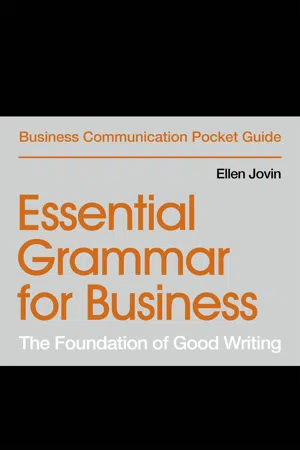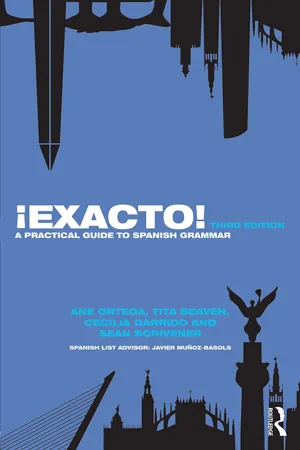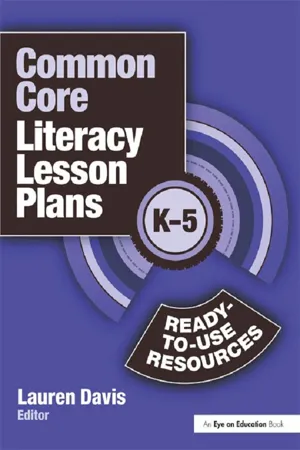Compound Sentence
A compound sentence is a sentence that contains two or more independent clauses, which are connected by coordinating conjunctions, such as "and," "but," or "or." Each independent clause in a compound sentence can stand alone as a complete sentence, but they are linked together to show a relationship between the ideas expressed in each clause.
8 Key excerpts on "Compound Sentence"
- eBook - ePub
Speech to Print
Language Essentials for Teachers
- Louisa Cook Moats(Author)
- 2020(Publication Date)
- Brookes Publishing(Publisher)
...A Compound Sentence, however, is one in which two or more independent clauses have been joined by a coordinating conjunction. A coordinating conjunction connects two words, phrases, or clauses that are of equal weight in a parallel relationship and that are in similar syntactic categories. The limited options for coordinating conjunctions linking clauses in Compound Sentences are captured with the acronym, FANBOYS: for, and, nor, but, or, yet, so. Here are examples of Compound Sentences: Harry molded the dough, and Hanna baked the bread. Jeff drove off the road, for he was in a blinding snowstorm. Beatrice sold the clunker, but she still had to pay off the loan. Linda wrote well, yet she was unable to publish her book. We were unable to get seats behind home plate, so we sat in the bleachers. They were not wearing parkas, nor were they sporting warm hats. A complex sentence is one in which one or more dependent clauses are attached to or embedded in an independent clause. Complex sentences may introduce a dependent clause with a subordinating conjunction, as in the following: When I was frightened, I hid under the bed. Although she made a good argument, Nancy lost the vote. Believing that the world would end, Paul stashed supplies in his basement. Until she learned how to bid, Melanie refused invitations to play bridge. Complex sentences may also embed relative clauses, introduced by a relative pronoun that, who, or what. Columbus believed that the earth was flat. He thought that he. would find India. The boy who loved animals saved the injured rabbit. Beauty loved the beast who treated her kindly. The baseball team, which had won 100 games, was leading the league. Correlative conjunctions are pairs of words used together to join similar elements...
- eBook - ePub
The Reading Comprehension Blueprint
Helping Students Make Meaning from Text
- Nancy Lewis Hennessy(Author)
- 2020(Publication Date)
- Brookes Publishing(Publisher)
...Of note, subordinating and coordinating conjunctions carry meaning and directly influence the nature of the relationships in complex and Compound Sentences. The structure of these sentence types appears straightforward, but they can be challenging depending on how the author chooses to elaborate on ideas. For example, sentences may contain compound subjects and predicates, embedded phrases, and even noun modifiers. Given the challenges of academic language, a basic understanding of sentence structure is necessary for working with the complex sentences found in academic text. Table 5.4. Sentence structures Sentence structure Example Simple You become. It takes a long time. Complex When you are Real, you don’t mind being hurt. Compound For a long time, he lived in the toy cupboard on the nursery floor and no one thought very much about him. Compound-complex He came so close this time that his long whiskers brushed the Velveteen Rabbit’s ear and then, he wrinkled his nose suddenly and flattened his ears. Examples are from The Velveteen Rabbit. (Source: Williams, 1992.) The Text Comprehension is an integrative process during which information from different sentences is combined. In addition to working out the syntactic sense of each sentence, “the comprehender needs to integrate information from different sentences to establish local coherence” necessary for constructing a mental model of the text (Cain & Oakhill, 2007, p. xii). Regardless of whether the text is narrative or informational, the reader needs not only to make meaning of the individual sentences but also to determine how those sentences cohere or, in combination, make sense. The reader constructs a coherent representation of text based on the words and syntax used by the author (surface code) and the cohesive devices (cohesive ties and connectives) that bridge ideas within and between sentences...
- eBook - ePub
A Sentence Diagramming Primer
The Reed & Kellogg System Step-By-Step
- Judith Coats(Author)
- 2020(Publication Date)
- Page Publishing, Inc.(Publisher)
...The Compound Sentence Structure Grammatical explanation. Compound Sentences have two or more independent clauses and no dependent clauses. The Compound Sentences may be divided with a comma plus a coordinating conjunction or a semicolon. The independent clauses are equal in grammatical rank. They are simply diagrammed one on top of the other. Note: if the sentences are joined by a semicolon, the horizontal line between the two clauses will remain blank, indicating the semicolon as a joiner as opposed to the comma plus the coordinating conjunction. Note: the sentences are joined verb to verb because the predicate is the heart of the sentence. The following is a sample Compound Sentence joined by a comma plus a coordinating conjunction:...
- eBook - ePub
Introducing English Syntax
A Basic Guide for Students of English
- Peter Fenn, Götz Schwab(Authors)
- 2017(Publication Date)
- Routledge(Publisher)
...Conjunctions that consist of more than one word, like so that in the example above, are called complex conjunctions. Other examples are: as soon as, as if, even if, even though, no matter how. Certain constructions consist of two separate conjunctions working together as a pair: You must either change your job or take a long vacation. These are known as correlative conjunctions. p.28 • Syntax: When two base sentences are joined together grammatically by a conjunction, they become clauses of the same sentence. We can therefore say that the syntactic task of a conjunction is to link clauses in a sentence grammatically (as well as semantically, as we saw above). In this book we will call the clause with the conjunction before it the conjunction clause, and the other one the free clause. One of our main topics later will be the explanation of the various syntactic relations between the free clause and the conjunction clause. We do not need to talk about these yet, though. 1.4 Phrase, clause and sentence Finally, we will look briefly at three basic units in sentence analysis and see how they are related to each other. The term phrase has already been introduced, but as a reminder we give a summary of the concept immediately below. What a sentence is has been regarded so far as intuitively understood, but at this point we will consider the meaning of the term more exactly. The third type of unit, the clause, has hardly been mentioned at all and now needs to be introduced properly. First of all, a word of general explanation concerning all three concepts. The sentence, the clause and the phrase are units of syntactic structure. To these, for the sake of completeness, we must add two more: words and morphemes. These five units of syntactic structure represent five levels of analysis related to each other in a hierarchy...
- eBook - ePub
Essential Grammar for Business
The Foundation of Good Writing
- Ellen Jovin(Author)
- 2019(Publication Date)
- Nicholas Brealey Publishing(Publisher)
...Dependent clauses begin with a subordinating conjunction, as in these examples: Subordinating Conjunction • Subject • Predicate because it was snowing when Mr. Rogers returned to work as you like it Although dependent clauses contain a subject and a predicate, they cannot stand alone as sentences; if they do, they are usually called sentence fragments, a common type of grammatical error. They can, however, be combined with independent clauses to create complete sentences, as you will see in the next section. 2.2 Sentence Types There are three main sentence types, described below: simple, compound, and complex. 2.2.1 Simple Sentences A simple sentence consists of a single independent clause, as in: Doris greeted me at the entrance. The company hired 30 new employees last quarter. The University of Chicago is located in Hyde Park. 2.2.2 Compound Sentences A Compound Sentence consists of two or more independent clauses. The clauses can be combined in various ways. In the following sentence, for example, the coordinating conjunction and combines two independent clauses. The seminar starts at 9:00 a.m., and lunch should arrive by noon. Although subordinating conjunctions are part of their dependent clauses, the and above does not count as part of either independent clause. In the next example, a semicolon combines two independent clauses to form another type of Compound Sentence. The company hired 30 new employees last quarter; it also opened a new factory. A third example of a Compound Sentence, below, contains three independent clauses, each indicated with brackets. The coordinating conjunction but combines the first two, and the coordinating conjunction so combines the second and third. (Aaron originally disapproved of the plan to expand the cafeteria], but [his co-workers all supported it], so [he decided to vote in favor of the idea). 2.2.3 Complex Sentences A complex sentence consists of at least one independent clause combined with at least one dependent clause...
- eBook - ePub
¡Exacto!
A Practical Guide to Spanish Grammar
- Ane Ortega, Tita Beaven, Cecilia Garrido, Sean Scrivener(Authors)
- 2018(Publication Date)
- Routledge(Publisher)
...26 Sentence organisation: compound and complex sentences 26.1 The Compound Sentence Compound Sentences - las oraciones compuestas - are formed by joining simple sentences. (☞ Simple sentences in Unit 24.) This can be done using one of two devices: by juxtaposition, that is, by linking simple sentences without using a specific connector conector - or link word (e.g. No me gusta, te lo regalo (I don't like it, I am giving it to you)); and by using what are called co-ordinating conjunctions or connectors (e.g. No ha terminado todaví a pero terminará pronto (She has not finished yet but she will soon)). Juxtaposed Separated by a comma, a semi-colon or a colon Me voy a casa; estoy agotada. (I’m going home; I’m exhausted.) El policía gritó: “¡Alto ahí!" (The policeman shouted: ‘Stop there!’) Co-ordinated To express added information (copulative) Joined by y (or e) in affirmative sentences or ni in negative sentences El edificio es muy bonito y tiene buenas vistas. (The building is lovely and has good views.) Juan no ha llegado ni ha llamado por teléfono. (Juan hasn’t arrived or phoned.) To express an alternative (disjunctive) Joined by o (or u) ¿Vienes con. nosotros o te vas con tus amigos? (Are you coming with us or are you going with your friends?) To express a restriction or contrast (adversative) Joined by pero or sino, aunque, sin embargo or no obstante No ganaron el partido pero lucharon hasta el final. (They did not win the match but they fought till the end.) To express a consequence or cause and effect (consecutive) Joined by así, así que, luego, conque, por (lo) tanto, por consiguiente or de forma/ modo/manera que No entiendo nada de lo que tengo que hacer, así que voy a ir a preguntarle al profesor. (I don’t understand what I have to do so I’m going to ask the teacher.) To express a distribution of ideas (distributive) Joined by: ya. . . ya bien. . . bien sea. . ...
- eBook - ePub
- Marina Rojavin(Author)
- 2022(Publication Date)
- Routledge(Publisher)
...PART II Compound Sentences DOI: 10.4324/9781003174738-8 Compound Sentences сложносочинённые предложéния are two or more simple sentences joined together. The simple sentences that make up a Compound Sentence can be relatively independent when each simple sentence has a complete lexical meaning that is sufficient to comprise an independent sentence: Зашлό сόлнце, и стáло хόлодно. Зашлό сόлнце. Стáло хόлодно. The sun went down, and it got cold. The sun went down. It got cold. Some simple sentences do not have a conclusive intonation, and they combine to make a single whole in terms of meaning and intonation: Нéбо покрьɪ́лось тýчами, и срáзу пошёл дождь. Clouds covered the sky, and it immediately started to rain. Compound Sentences are connected by intonation and conjunctions or by intonation without conjunctions. Лéна налилá чай в чáшку и сéла за стол, Сáша тόже сел за стол. Lena poured tea into the cup and sat down at the table, Sasha also sat at the table. Луньɪ́ нé было: нéбо бьɪ́ло в тýчах. There was no moon: the sky was covered in clouds. Compound Sentences can be connected with copulative, disjunctive, or adversative conjunctions. 7 SENTENCES WITH COPULATIVE CONJUNCTIONS DOI: 10.4324/9781003174738-9 Main topics The conjunctions и, ни … ни, тόже, тáкже Punctuation marks The copulative conjunctions соедини́тельные сою́зы и, ни … ни, тόже, тáкже conjoin clauses of equal ranks. The conjunction и and expresses temporal relationships indicating the simultaneity or the sequencing of actions...
- eBook - ePub
Common Core Literacy Lesson Plans
Ready-to-Use Resources, K-5
- Lauren Davis, Lauren Davis(Authors)
- 2013(Publication Date)
- Routledge(Publisher)
...Sentence Power Forming Compound Sentences Grade Level: 3; can be adapted to other grades (see note in Overview) Time Frame: Approximately one or two class periods Overview: This lesson teaches students how to form Compound Sentences by using simple sentences and conjunctions. You can use this lesson in conjunction with a writing assignment to help students apply what they learn about sentences (e.g., as a revision mini-lesson). This lesson was written for third graders, but you can adapt it to other elementary grades by using simpler or more challenging sentences and by spending more or less time on the proper punctuation of Compound Sentences. Common Core State Standards 3: Language, Standard 1: Demonstrate command of the conventions of standard English grammar and usage when writing or speaking. h. Use coordinating and sub-ordinating conjunctions. i. Produce simple, compound, and complex sentences. 3: Language, Standard 2: Demonstrate command of the conventions of standard English capitalization, punctuation, and spelling when writing. 3: Language, Standard 6: Acquire and accurately use grade-appropriate conversational, general academic, and domain-specific words and phrases. 3: Writing, Standard 5: With guidance and support from peers and adults, develop and strengthen writing as needed by planning, revising, and editing. Objectives Students will learn how to produce Compound Sentences by using simple sentences and coordinating conjunctions. Students will use their knowledge of Compound Sentences to revise their writing for sentence variety. Background Knowledge Required Students should have a basic understanding of producing sentences, including beginning a sentence with a capital letter and ending it with end punctuation. Materials Needed Handout: Compound Sentences Activity Sheet, p. 184 Examples of students’ writing Agenda 1. Introduction and Modeling: Write this paragraph on the board: I will never forget Kyra’s birthday. I arrived at her house early...







